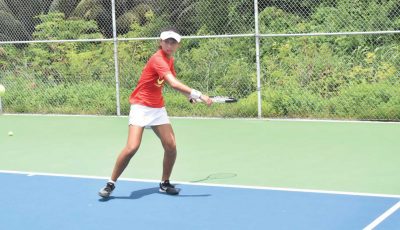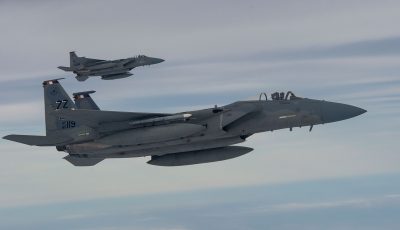Barter reconnects with her Chamorro roots

Beverley Sophia Barter, right, joins David M. Sablan, center, and his wife Rita as she reconnects again with her Chamorro ancestry. Barter, who now lives in Queensland, Australia, was on Saipan to visit her relatives and friends. (Jon Perez)
Beverley Sophia Barter had been dreaming of her mother, who died more than 20 years ago, for quite some time. It could have been a reminder by her mom that she fulfills her promise of someday come back home.
Barter is among the hundreds of Chamorros who were born in Australia but trace their roots in the Marianas. She arrived on Saipan a few days ago to meet her relatives and returned to Queensland yesterday.
“I’ve been dreaming of my mother, as if she’s telling me to come back to Saipan because I promised her that I would come back home before she died. It took me years to fulfill that promise and the trip is worth it, seeing my relatives,” Barter said.
“Coming back here was also a personal reflection for me. It was a very interesting experience,” added Barter, whose grandfather managed the workforce in Rabaul Township of East New Britain in the then New Guinea.
According to Dave M. Sablan, who met with Barter, several Chamorros were recruited to work for the then German government under the German Trust Territory in the 1900s. They went to Yap then in Rabaul, which as then the seat of administration of the German Trust Territory.
Germany had colonized the Northern Pacific and Micronesia in the late 1800s but relinquished their rights after losing in World War I. The League of Nations, the predecessor of the United Nations, then allocated German colonies to different countries.
After the war, several Chamorros chose to move to Brisbane in Australia where they intermarried with the locals. Australia, in the 1960s, then held a census to assess the different ethnic groups and extended citizenship to those not indigenous to the country.
Chamorros who were recruited back then came from Saipan, Guam, Tinian, and Rota. The first generation of full-blooded Chamorros that migrated to Australia was born in Papua New Guinea.
“There’s a lot now who are the new generation of Chamorros in Australia. Australia, like the United States, is a vast country. There are families living in Queensland, some are in the East Coast but few are in the West, South, and Northern Territory,” said Barter.
Sablan added that T-Galleria president Marian Aldan-Pierce has some relatives in Australia as the Aldan family were among the first Chamorro migrants. “They are part of those who worked in Yap and Rabaul. Some went to Australia while other decided to return to Saipan and Tinian.”
Barter’s cousin, Bessie Namaulig Lucker, comes from the Deleon Guerrero bloodline. Her mother, the late Anna Maria Namaulig Deleon Guerrero, and her cousin’s mom are sisters.
“There are the Aldans and Dela Cruzes there. They are widely spread. Sometimes we get together, that’s what families are for. But most of the time, thanks to technology, we connect on Facebook,” said Barter.



























